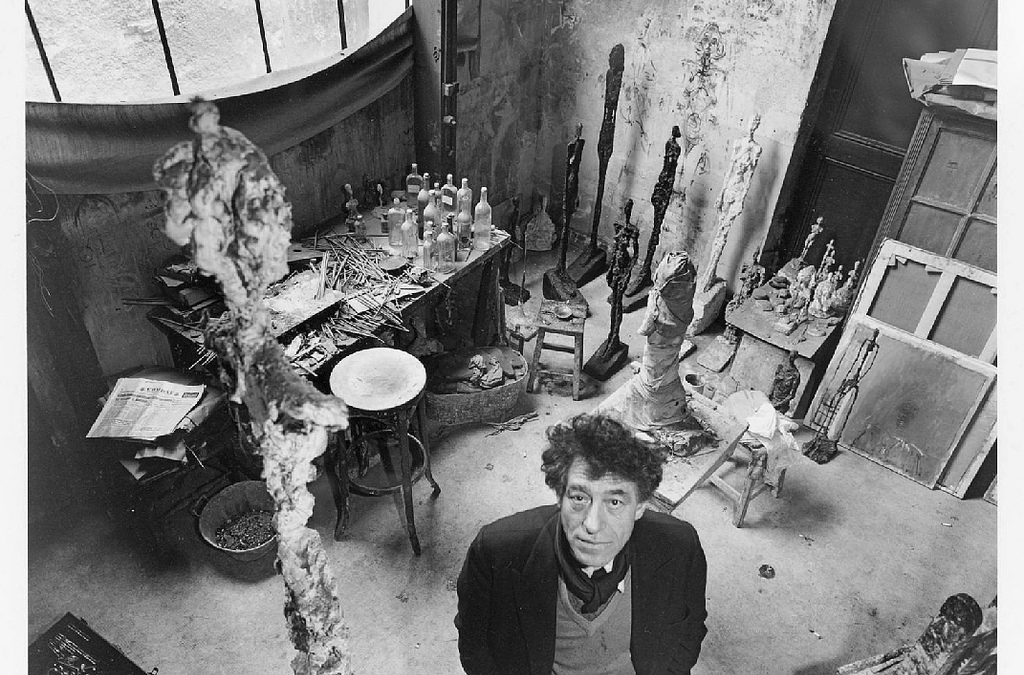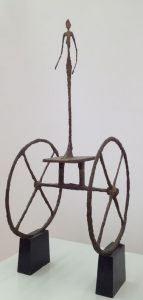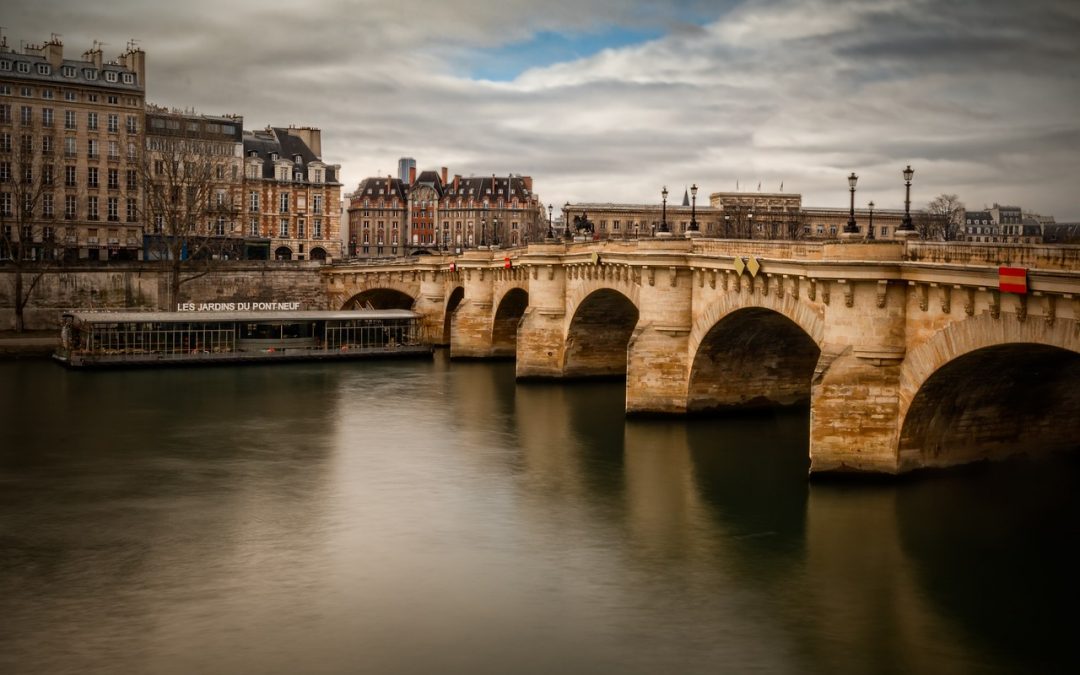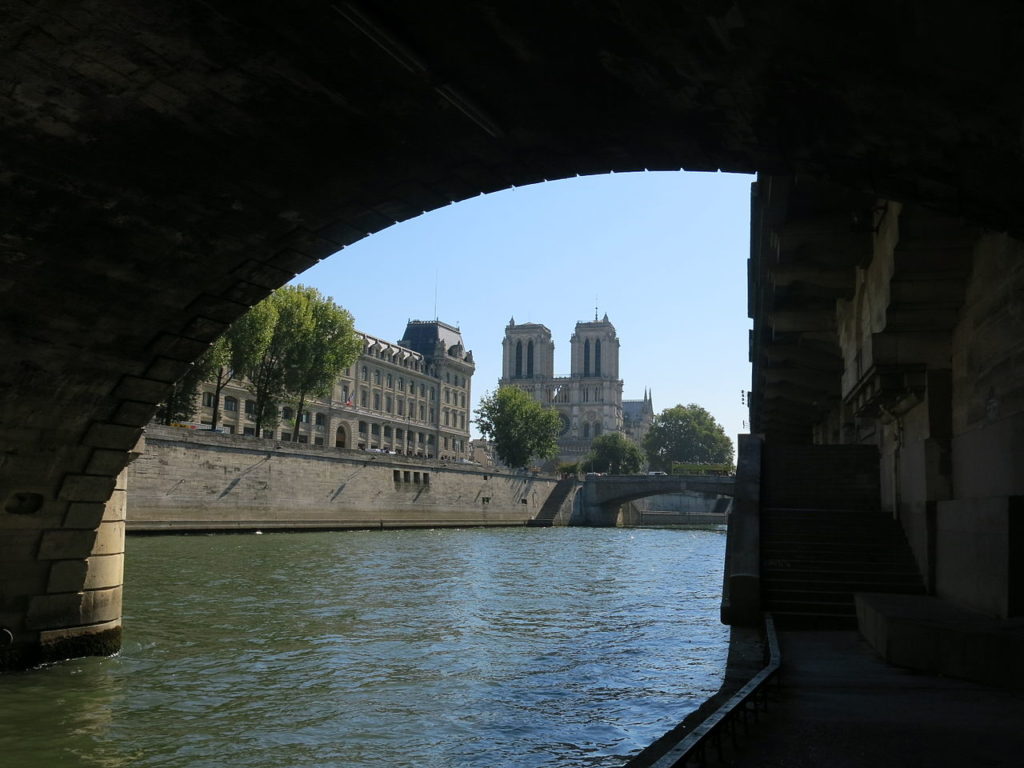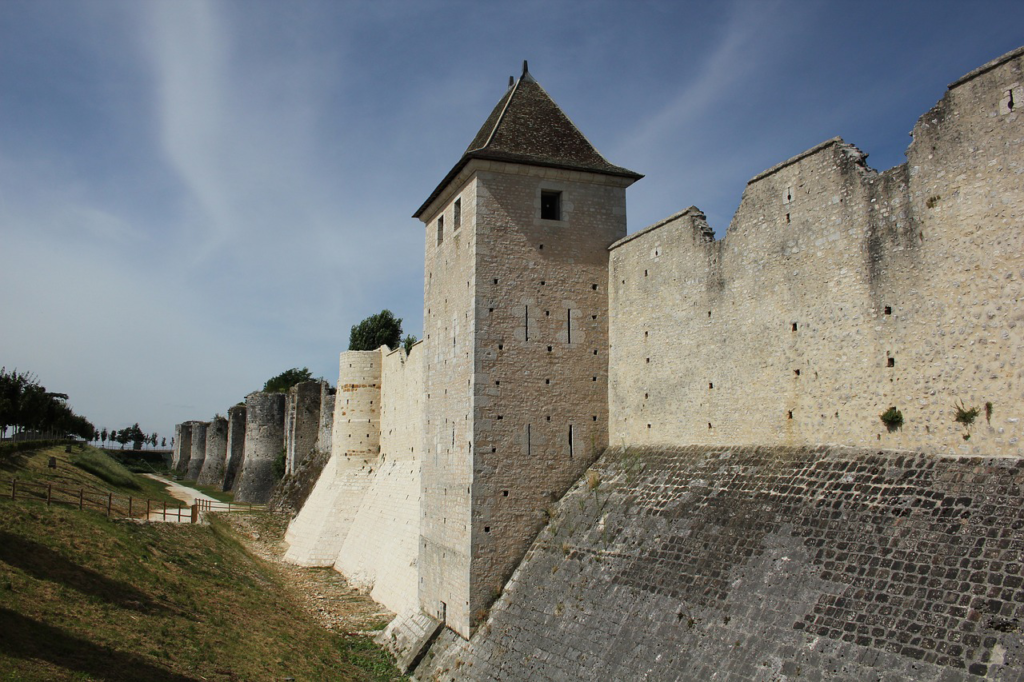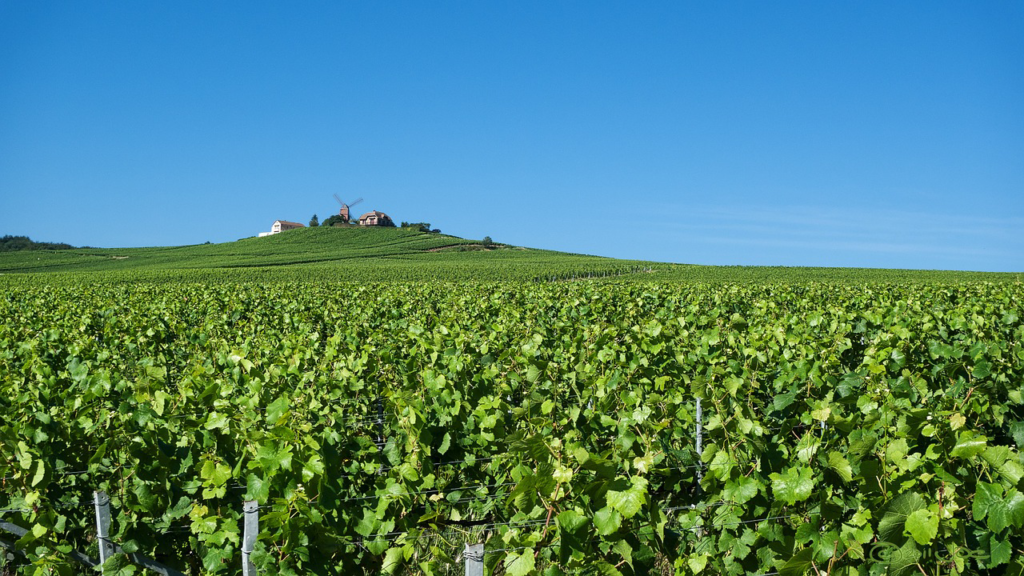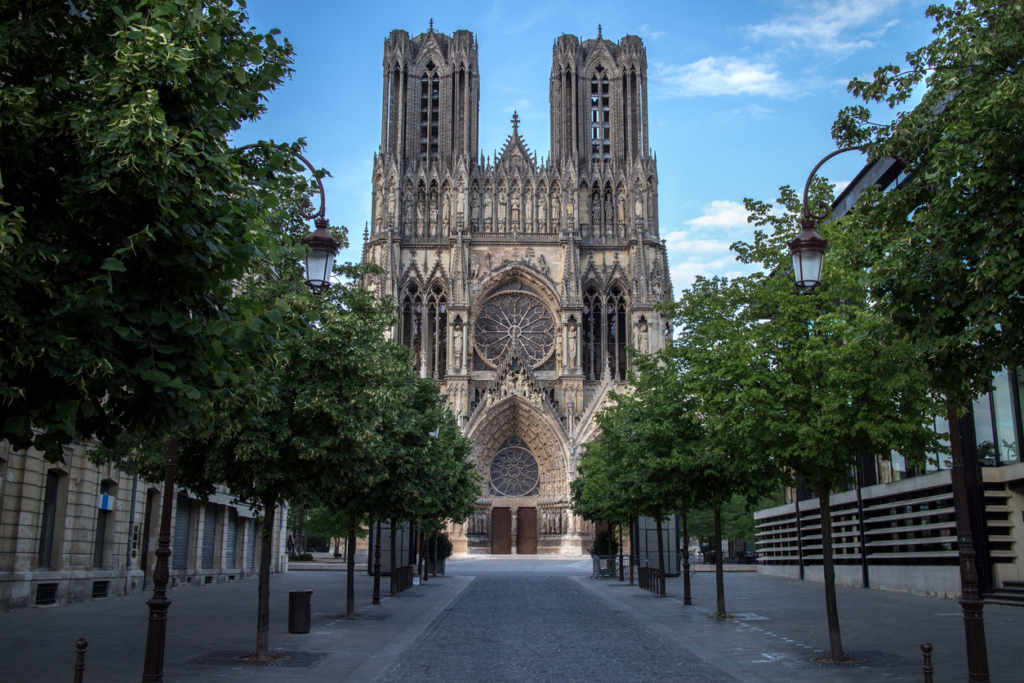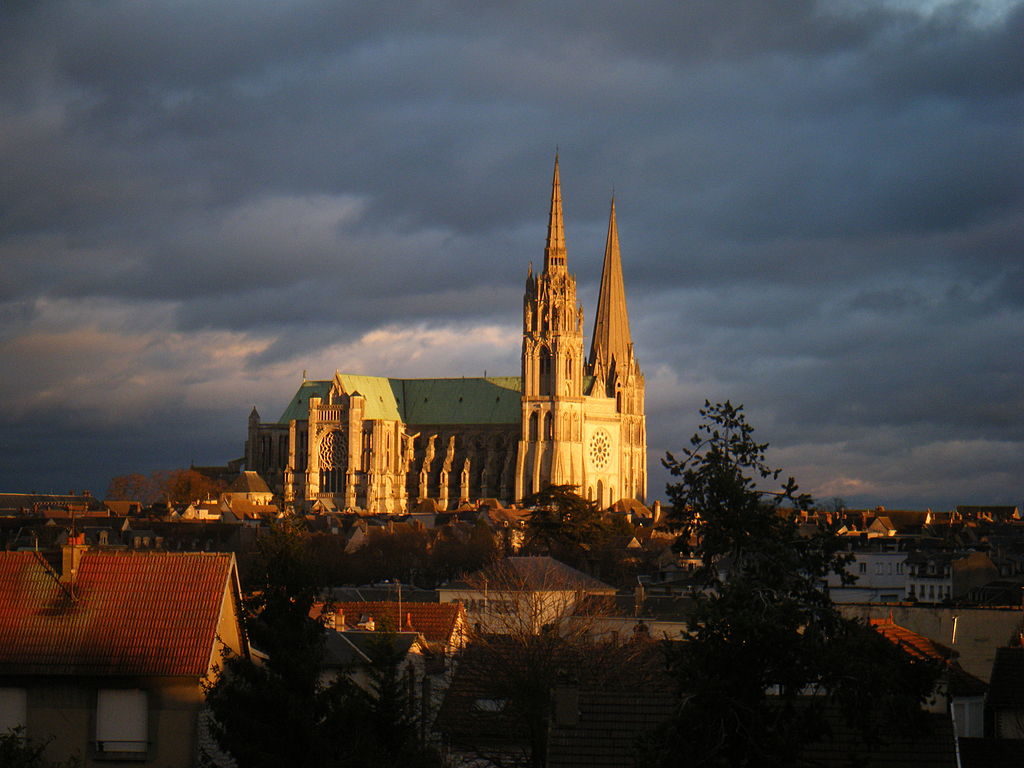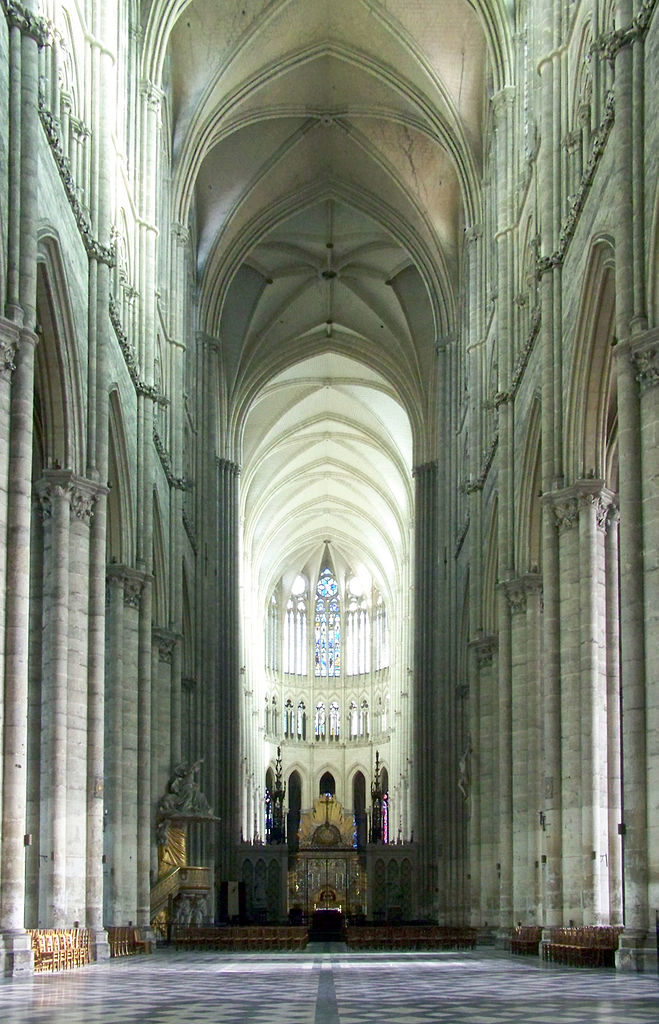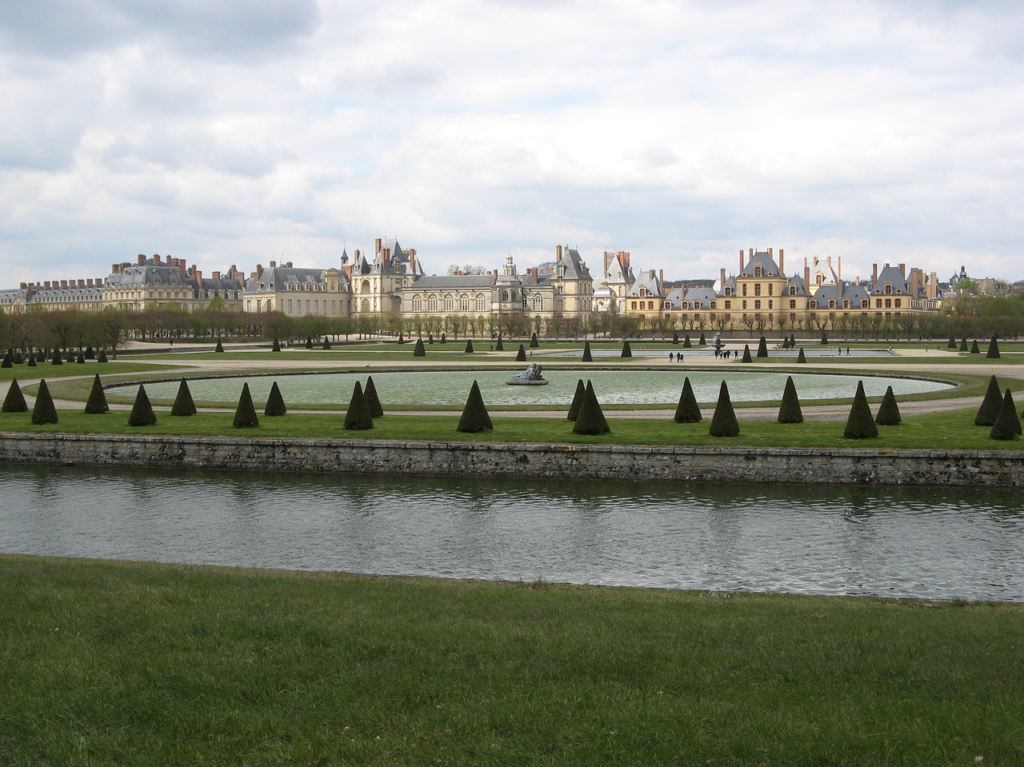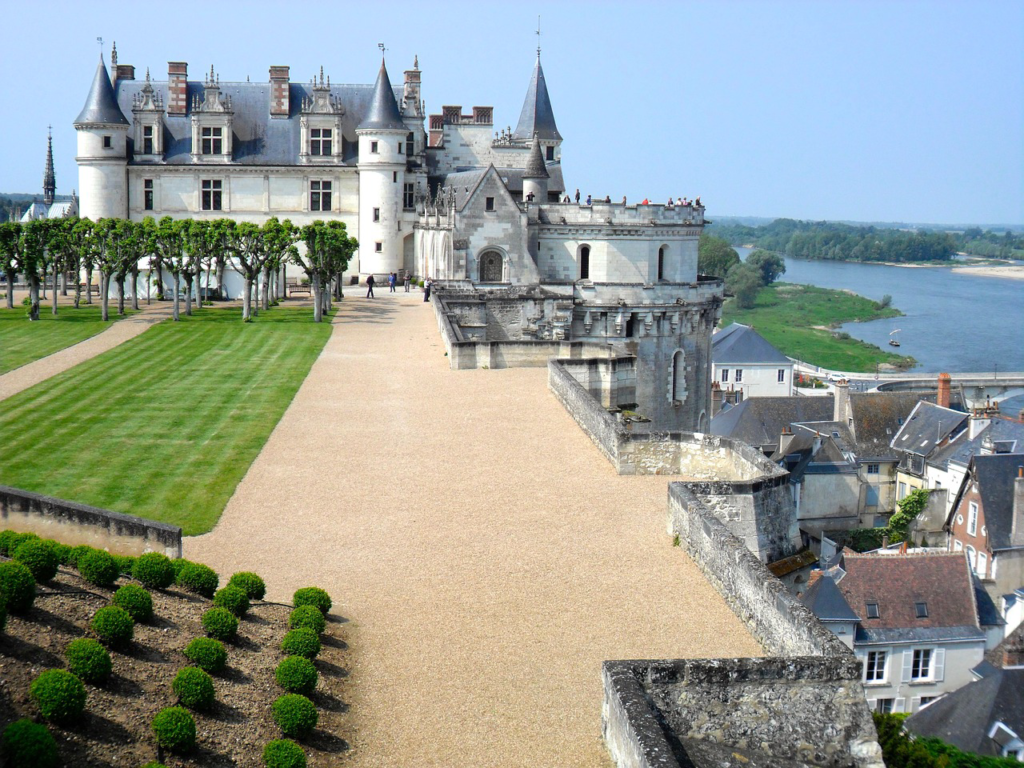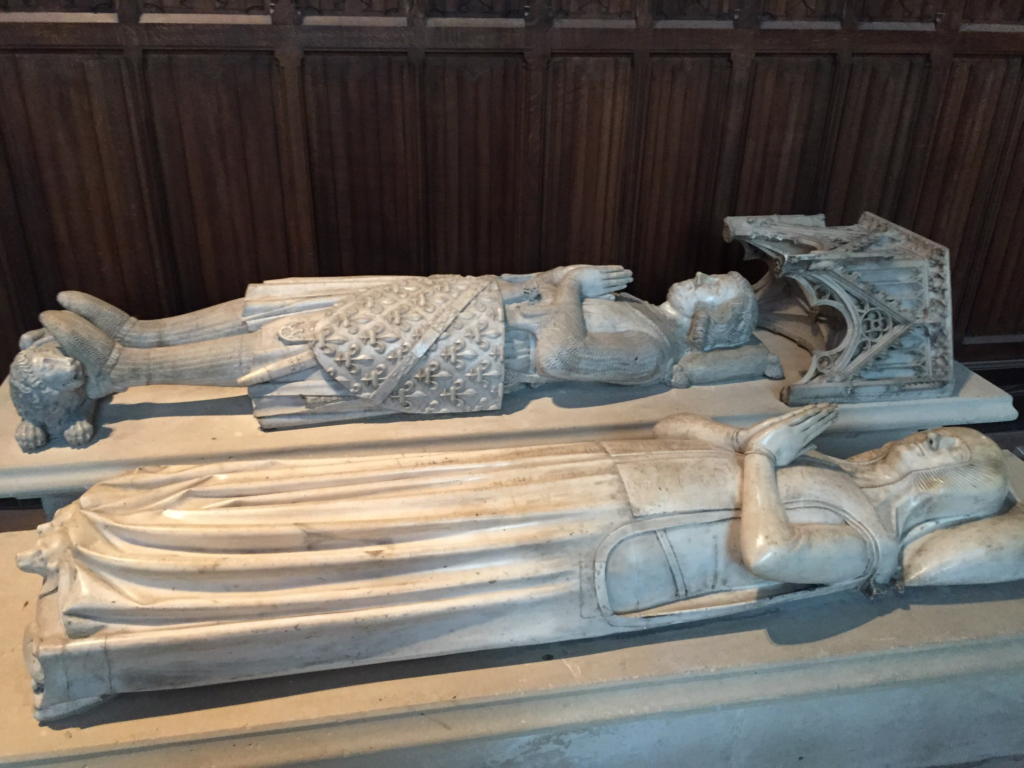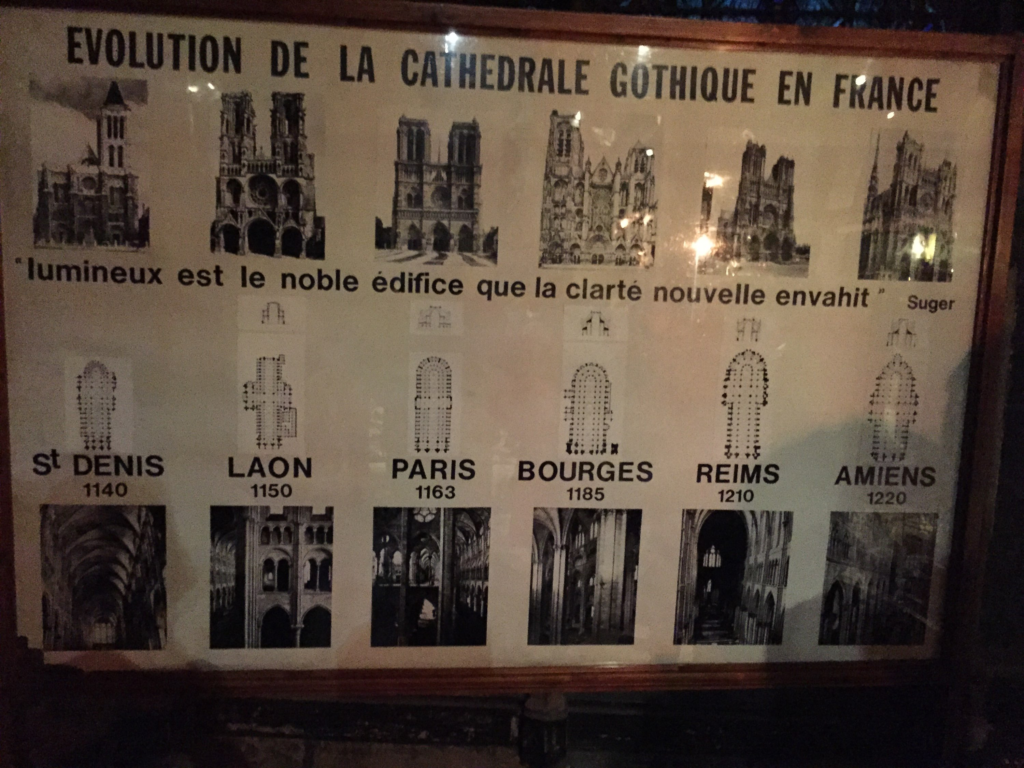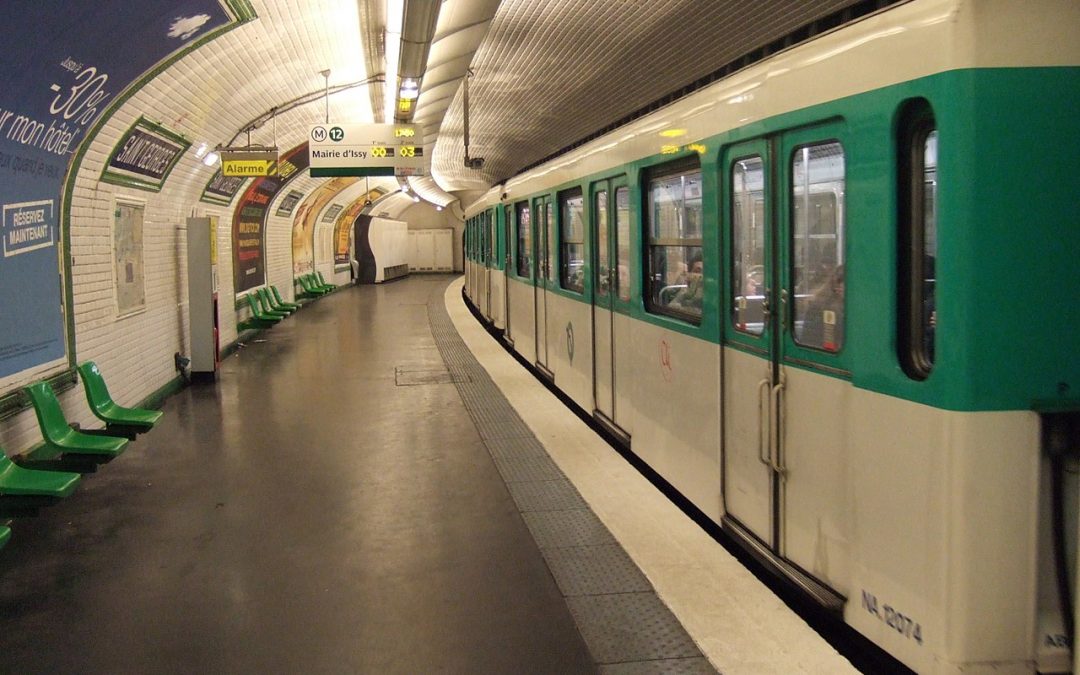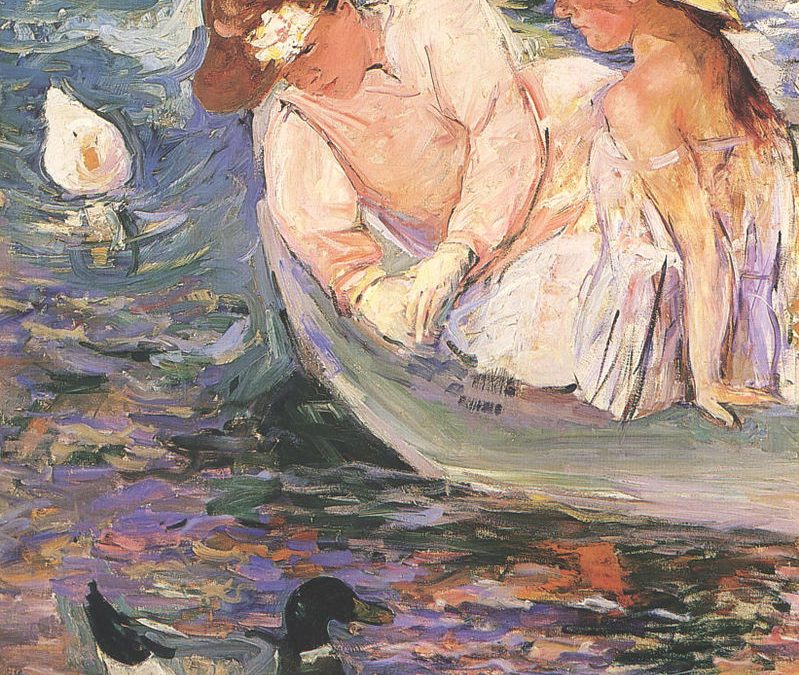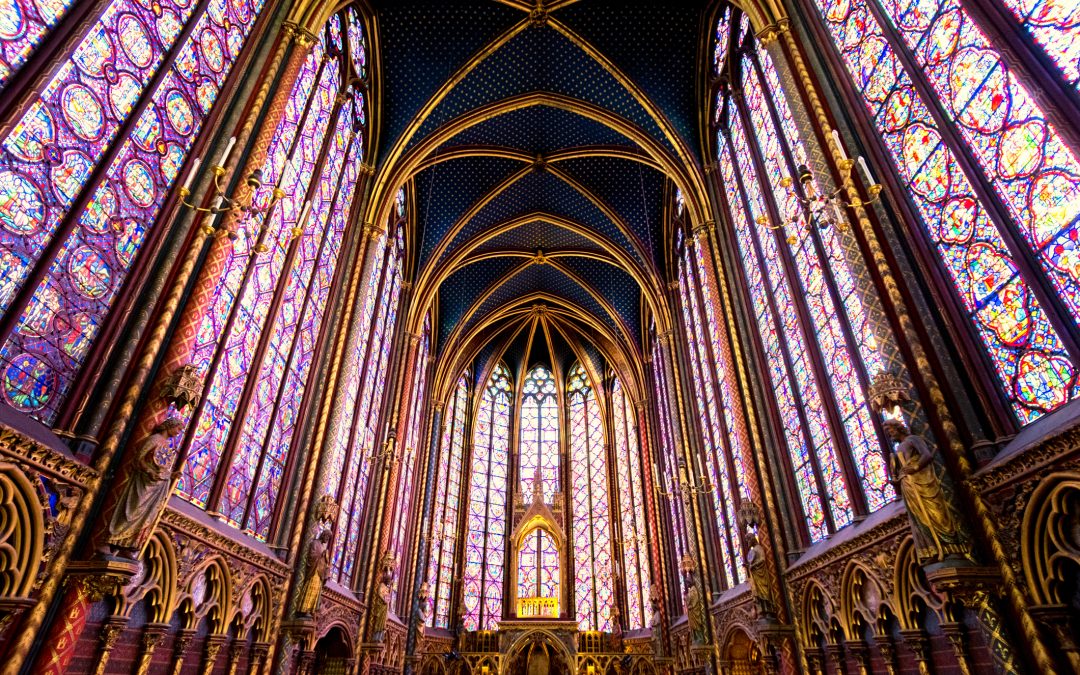
13 Awe-Inspiring Churches
Paris is chock-a-block with awe-inspiring churches. Many of the grandest are newer replacements built on ancient Christian sites. But “newer” is a relative term. Like many other buildings in Paris, some of these churches are many hundreds of years old with long and interesting histories.
France is overwhelmingly Roman Catholic – whether in name only, or more. The churches listed here began, and most remain, Roman Catholic. Only those that have been deconsecrated are no longer under the Pope of Rome.
The awe-inspiring churches listed here are in no particular order. Of course you know some, but others are definitely worth the effort to visit. Also, the names of the churches are listed in French. English may seem easier for now, but in Paris, only French will be written on signs, maps and plans of the quarter at Métro exits.
If you plan on visiting the awe-inspiring churches that are still maintained as active Roman Catholic institutions, please be respectful of the religion. Some churches have been known to deny entry to those without long pants or covered shoulders.
So, here they are, 13 awe-inspiring churches in Paris:
1. Cathédrale Notre-Dame de Paris
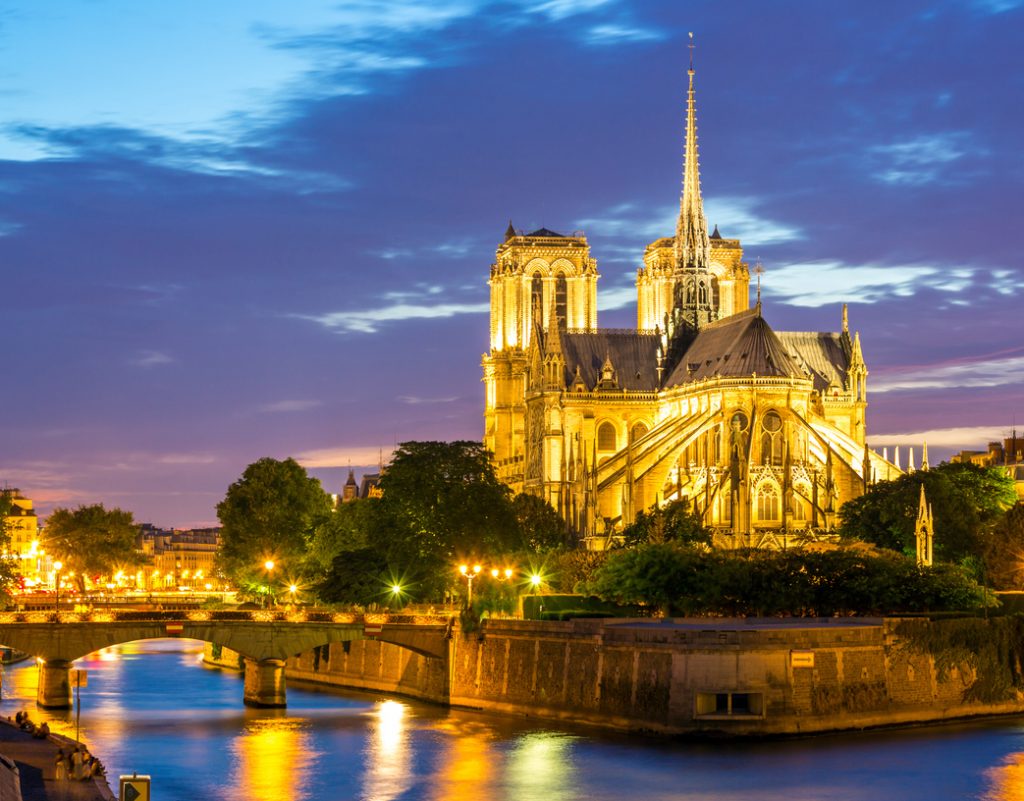
Cathédrale Notre-Dame de Paris is the most well known of the awe-inspiring churches in Paris. It is amazing to behold and it is an incredibly beautiful feat of engineering. The plaza out in front provides plenty of space to admire this marvelous creation.
Inside is a working Medieval masterpiece. Mass is said regularly. Step inside for a view to the Middle Ages. Smell the incense, hear the homily (over loudspeakers now) and enjoy the soft light coming in through the stained glass.
Make sure to walk around the entire cathedral. The shady side close to the river is a sweet little park. On the opposite side, stand close to the sides and look up to see the gargoyles overhead. Beware the gargoyles during a rain storm. They deliver the water out and away from the church – onto the sidewalk. Also, take a look in the back. Inside the fence surrounding the church, little storage areas protect stone pieces and parts from the cathedral.
Architectural Style:
- Notre-Dame de Paris is the perfection of French Gothic architecture. Some may declare cathedrals in other cities to be the best example, but … seemingly everything is perfection. From the arches above the doors, the towers, and the ornate flying buttresses. And that is not even considering the spectacular interior.
Interesting Facts:
- During the Revolution, Notre-Dame de Paris was used as a warehouse.
- Notre-Dame de Paris celebrated 850 years in 2013. It has witnessed 80 kings, two emperors and five republics.
Getting There:
Address: 6 Parvis Notre-Dame, on the Place Jean-Paul II, 75004
Nearest Métro and RER: Saint-Michel – Notre-Dame
Official website: http://www.notredamedeparis.fr/en/
Admission fee: No, but, there is a charge to enter the treasury, the crypt and to climb the towers.
2. Sacré-Cœur
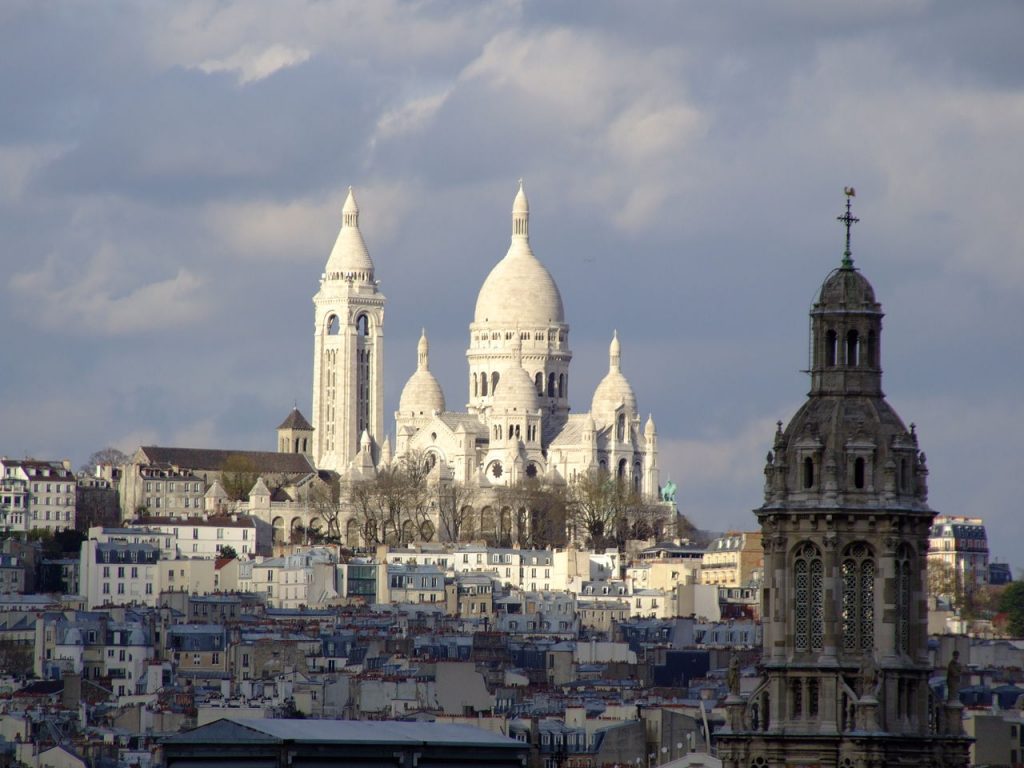
From a distance, Sacré-Cœur could compete for the best of the awe-inspiring churches. Its gleaming white stone sitting atop the city like a jewel makes it one of the most recognizable places in Paris.
The complete name is Basilique du Sacré-Cœur de Montmartre (Basilica of the Sacred Heart of Montmartre), but generally the name is shortened to only, “Sacré-Cœur.”
Besides the church itself, one of the strongest draws to visit Sacré-Cœur is the view from the steps overlooking Paris. Beautiful at day or night, morning or evening, blazing hot or rainy. The expansive vistas are adored by many Parisians and visitors.
Architectural Style:
- Sacré-Cœur’s architectural style is Romano-Byzantine. It was consecrated in 1919. And, at nearly 100, this is the youngest of the awe-inspiring churches.
Interesting Fact:
- The ceiling above the alter is covered by one of the largest mosaics in the world. Beautiful blue and gold tiles create a lovely canopy drawing you all the way into the basilica to see the powerful mosaic.
Getting There:
Address: 35, rue du Chevalier de la Barre, 75018
Nearest Métro: Anvers or Abbesses, then walk to the funiculaire. If you are looking up to Sacré-Cœur, the funiculaire is to the left at the bottom of the hill. Taking the funiculaire will take one regular Metro ticket.
Official website: http://www.sacre-coeur-montmartre.com/english/
Admission fee: No, but there is a charge for visiting the crypt and climbing the dome.
3. Église de Saint-Germain-des-Prés
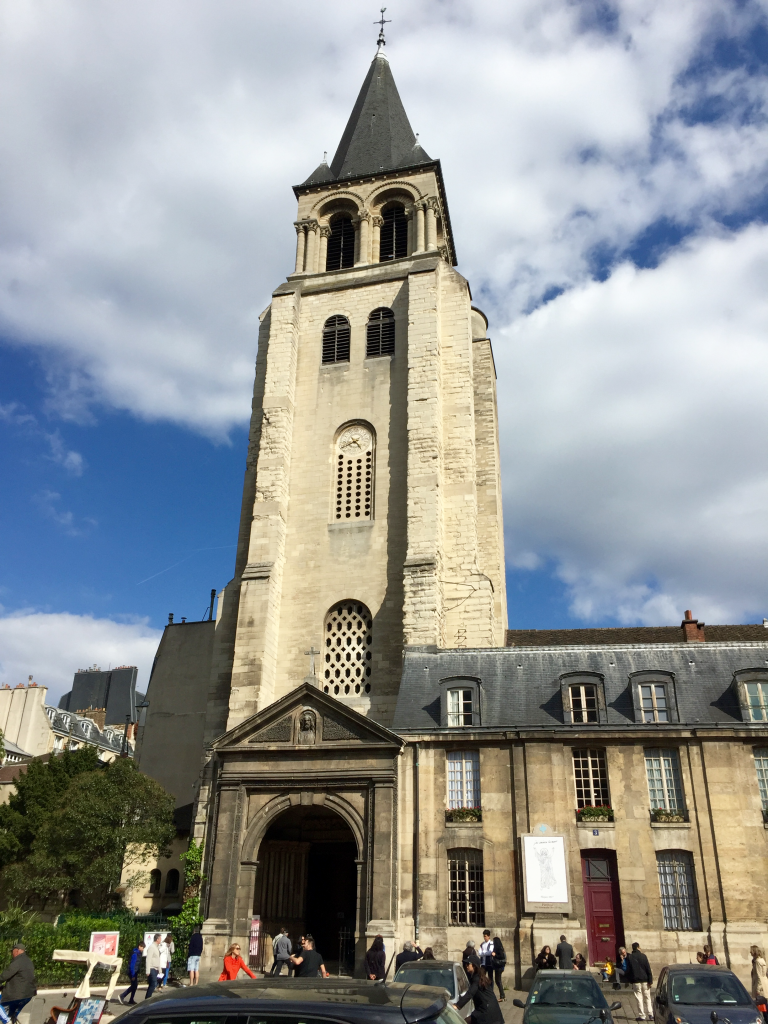
“Prés” is the French word for grassy areas or fields. So the translation of the name from French is, “Church of St. Germain of the Fields.” Of course, it doesn’t look like it now, but when Paris was beginning as a village, this area was only fields.
In the early Middle Ages, the Merovingian King, Childebert I commanded the creation of an abbey (which includes a church) in these fields. And in 558, St. Germain, the bishop of Paris, consecrated the first church on this site.
As time moved on, a large, wealthy and important royal abbey grew on the fields. So large that it encompassed much of the area that is now referred to as the St. Germain neighborhood. And, so important that royalty was buried here until Dagobert I was buried at Basilique Cathédrale de Saint-Denis in 639.
That original church is long gone, but the existing building it is the oldest of the big churches in Paris with parts dating from the 1000s and before.
Architectural Style:
- The architectural style of Église de Saint-Germain-des-Prés is described on its website as “primitive Gothic.” However, after many years and reconstructions, elements and details of other styles can be found.
- Inside, the painted interior from the 1800s may be a little surprising. The walls and columns are covered with interesting designs and beautiful scenes painted in many colors. Up above, the ceiling is dotted with thousands of gold stars on a deep blue background. Around back you can see the flying buttresses. Compared to the ornate flying buttresses on the Gothic churches that would be built in the future, these may seem rather utilitarian.
Interesting Fact:
- In 1650, the philosopher, mathematician and scientist René Descartes died. After his body was moved a few times, finally in 1819 his cremated remains were interred in Église de Saint-Germain-des-Prés. But, his head is preserved in the Musée de l’Homme.
Getting There:
Address: 3 Place Saint-Germain-des-Prés, 75006
Nearest Métro: Saint-Germain-des-Prés
Official website: https://www.eglise-saintgermaindespres.fr
Admission fee: No
4. Chapelle Royale, Château de Versailles

Pretty much everything that Louis XIV commissioned is over-the-top. And, his chapel at Versailles is no exception. From the multi-colored marble floor to the exuberant ceiling paintings, everything is magnificent.
It is the fifth royal chapel at Versailles. And, this last one, is one of the awe-inspiring churches in Paris (or, very close to Paris).
According to its official website, “Every day the Court attended the King’s mass, which were usually held in the morning at 10. The sovereign sat in the royal tribune surrounded by his family. The ladies of the Court occupied the lateral tribunes, while the Officers and members of the public were seated in the nave.”
Architectural Style:
- The Chapelle Royale (or Royal Chapel) is considered a masterpiece of the architect, Jules Hardouin-Mansart. He designed it in the French Baroque architectural style and it was completed in 1710, two years after his death.
Interesting Fact:
- Intertwined script Ls adorn the chapel. These represent Saint Louis and Louis XIV. Louis XIV commanded the chapel to be built. The chapel is dedicated to Saint Louis.
Getting There:
Address: Château de Versailles
RER: Gare de Versailles Chantiers
Official website: http://en.chateauversailles.fr/discover/estate/palace/royal-chapel#guided-tour
Admission fee: Yes, plus a tour is required to go inside the chapel.
No longer a consecrated church
5. Église Saint-Gervais-et-Saint-Protais
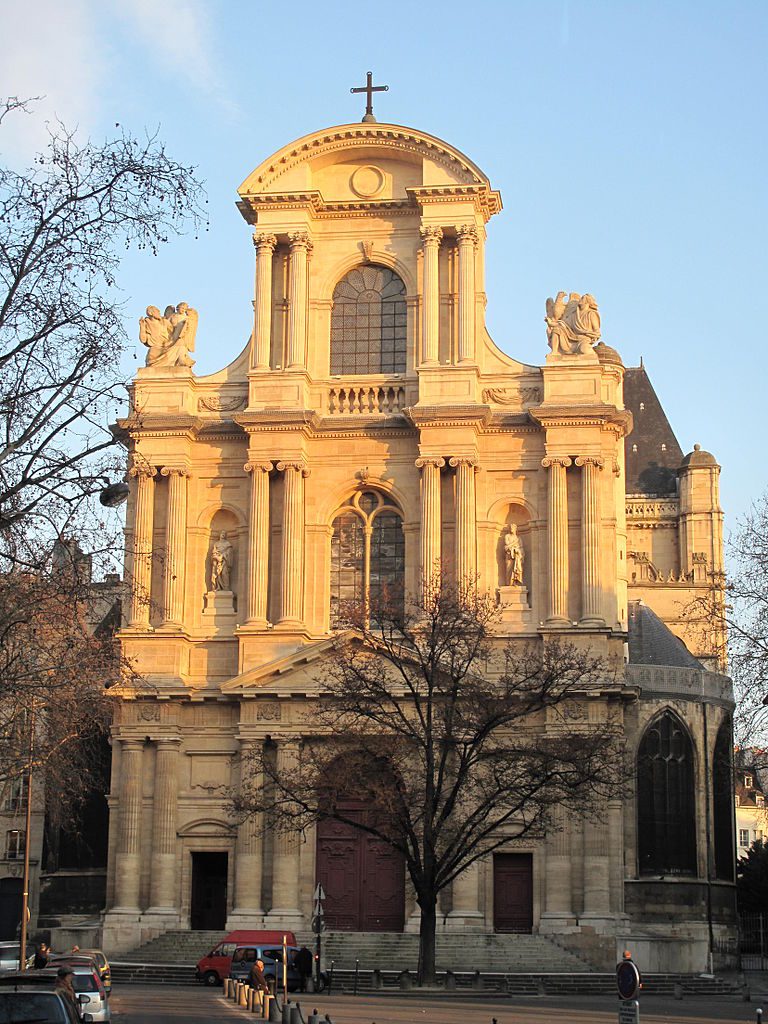
One of the best things about this awe-inspiring church is that you can enjoy it with practically no one else in sight. Even though it is right in the middle of the busy 4th Arrondissement, it does not seem to be visited by many tourists. Take advantage of the solitude to really enjoy its beauty.
Of course, like many other awe-inspiring churches, the grand organ is mesmerizing when played. It is also one of the oldest in Paris. Concerts are not common events, so attending mass may be the best time to experience the organ.
Architectural Style:
- Église Saint-Gervais-et-Saint-Protais is the first church with a French Baroque facade. Most of the interior is Late Gothic with fine examples of Gothic stained glass and some from modern times as well.
Interesting Fact:
- Don’t miss the choir stalls and the incredible wood carvings from the time of Francois I and Henri II (1500s and 1600s). Although beautifully carved, some of the reliefs can be quite disturbing.
- During the Revolution, it was the Temple of Reason and Youth.
Getting There:
Address: 13 rue des Barres, 75004 or Place Saint-Gervais
Nearest Métro: Hôtel de Ville or Pont Marie (the church is behind the Hotel de Ville)
Official website: https://www.paris.catholique.fr/-eglise-saint-gervais-saint-protais-.html
Admission fee: No
6. Basilique Cathédrale de Saint-Denis

Marie-Antoinette’s tomb is in the Bourbon crypt.
Around the year 250, St. Denis was beheaded on Montmartre (the hill of martyrs). St. Denis did not die there. He picked up his head and walked North and eventually collapsed on the spot where the current cathedral is located. The way to find St. Denis in any line up of saints is to look for the one carrying his head, that is St. Denis.
Since St. Denis’ death, some type of shrine or memorial for the dead has been occupying the site. Because of its long history as a burial ground, many archeological excavations have taken place over the years. Around the church, many sarcophagi have been excavated with some dating from as early as the 300s and 400s.
Inside the cathedral, tombs are arranged throughout the main chapel. A map illustrates who is where. Along with containing the remains of the French royalty, the collection of funerary sculpture from the 12th to the 16th centuries is the largest of its kind. Life-like effigies adorn the tombs. On some, symbolic animal sculptures sit at their feet.
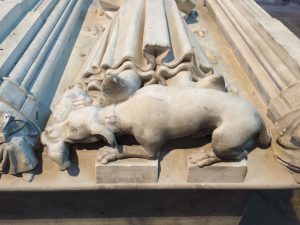
Architectural Style:
- This church is held out as the first truly Gothic cathedral. In 1144, the apse was consecrated with King Louis VII and Queen Eleanor of Aquitaine leading the procession.
Interesting Fact:
- Along with Louis XIV, the remains of Louis XVI and Marie-Antoinette are in the crypt.
Getting There:
Address: 1 rue de la Légion d’Honneur, 93200 Saint-Denis
Nearest Métro: Basilique de Saint-Denis
Official website: http://www.saint-denis-basilique.fr/en/
Admission fee: Yes
7. Sainte-Chapelle
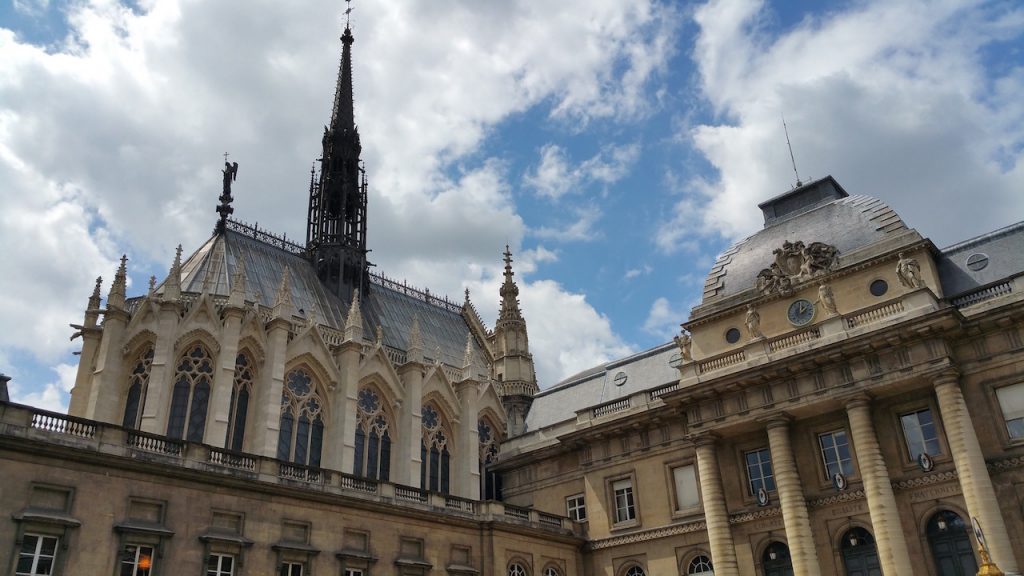
Louis IX (later Saint Louis) commanded the construction of this chapel to house holy Christian relics, including Christ’s crown of thorns. In 1248, Sainte-Chapelle was consecrated as a Roman Catholic church. Eventually, in 1842, the French government designated it a National Monument.
Sainte-Chapelle is truly one of the most awe-inspiring churches in Paris. The upper chapel is mind blowing. Walls of stained glass soar toward the ceiling. Every inch of surface is painted. It is kind of like being inside a jewel box. This magnificent chapel was reserved for worship exclusively by the king and his family. (The photo at the beginning is of the stained glass in Sainte-Chapelle. Fit for a king, no?)
Staff and others would worship in the lower chapel. It is fascinating to visit and also extremely beautiful. Also, the oldest fresco in France is within the lower chapel.
Looking at the Île de la Cité, there is a spire that seems to stick up out of nowhere. It seems to be kind of near Notre-Dame de Paris, but then if you are walking, it kind of disappears. It reappears while looking into the courtyard of the Palais de Justice – and – looking up. That spire belongs to Sainte-Chapelle. The front of Sainte-Chapelle is hidden behind the walls of the Palais de Justice, fronting the street. If there is no line, you can walk right by and miss it.
Architectural Style:
- Sainte-Chapelle is definitely in the Gothic style. More particularly, it is in the Rayonnant Gothic style. Rayonnant comes from the French word for radiating, as in the famous rose windows.
Interesting Fact:
- Sainte-Chapelle was built in ONLY 7 YEARS!!! Incredible.
Getting There:
Address: 8, boulevard du Palais, 75001
Nearest Métro and RER: Saint-Michel – Notre-Dame
Official website: http://www.sainte-chapelle.fr/en/
Admission fee: Yes
8. Le Panthéon
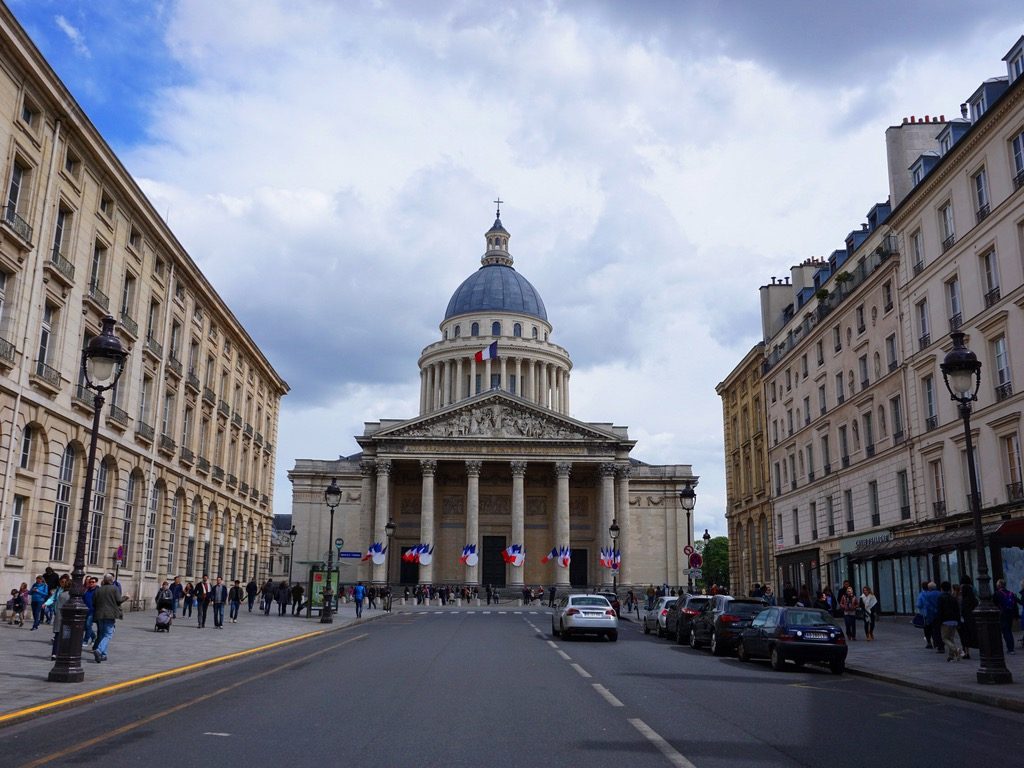
Le Panthéon is one of the most awe-inspiring churches that is no longer a church, but a temple to many of the worthies of France.
In 1744, Louis XV was suffering an illness so horrible, that he vowed, should he recover, he would direct a church be built to Ste. Geneviève. After he recovered, he kept his word and the church of Ste. Genevieve was built.
However, once the structure was completed in 1791, the French revolutionaries changed the use of the building to a mausoleum for French dignitaries. A pantheon, or temple to all gods. During its history, it served as a Christian temple again. But, when Victor Hugo died in 1885, Le Panthéon was once and for all converted to a temple honoring French men and women who provided France with great service.
The crypt is a fascinating trip through history. Tombs and crypts fill the lower floor. Look for the names of Voltaire, Rousseau, Victor Hugo, Émile Zola, Marie Curie, and Alexandre Dumas.
Architectural Style:
- According to its publications, Le Panthéon is a mix of Classical and Gothic styles. Its design by the architect Soufflot was based on St. Paul’s in London and St. Peter’s in Rome and includes a tremendous dome. That dome is easy to see from many parts of Paris.
Interesting Facts:
- In 2018, Simone Veil was the most recent addition to Le Panthéon. Veil was a holocaust survivor and politician who broke barriers for women in French politics.
- Climb to the top for beautiful views. Also, Foucault’s pendulum is suspended from the ceiling.
Getting There:
Address: Place du Panthéon, 75005
Nearest Métro: Maubert-Mutualité or Cardinal Lemoine (both are several blocks away)
RER: Luxembourg
Official website: http://www.paris-pantheon.fr/en
Admission fee: Yes
No longer a consecrated church
9. Église Saint-Séverin

Detail of Saint-Séverin. Look at the fine stonework and extraordinary gargoyles.
Séverin was a hermit living by the Seine in the 5th and 6th centuries. In 504, he cured King Clovis of a disease for which his doctors had no remedy. Along with that good deed for the royalty, he also performed other healing miracles that brought him enough admiration to dedicate a church to him.
Since the 500s, there has been a St. Severin church on that spot. That’s right, 1,500+ years ago. Parts of the building date back to the end of the 11th century, making it one of the oldest churches in Paris. Most of the current structure is from the 1200s – 1400s. Like other awe-inspiring churches, it has an organ. Much of the works are from the 18th century with even earlier pipes.
If you are in near Place Saint-Michel trying to find some street food, walk down Rue Saint-Séverin to find this church. Take a look at the gargoyles on the exterior, the flying buttresses and go in to see the interior. Some of the stained glass windows are from as long ago as the 14th century! Not as tall, or as big, or as grand as Notre-Dame de Paris, but it is still impressive.
Architectural Style:
- Late Gothic. It is in middle of a busy neighborhood, so maybe it doesn’t get as much attention as it should?
Interesting Fact:
- The oldest bell in Paris rings from its tower.
Getting There:
Address: 3, rue des Prêtres Saint-Séverin, 75005
Nearest Métro: Saint-Michel – Notre-Dame
Official website: https://saint-severin.com
Admission fee: No
10. Église de la Madeleine
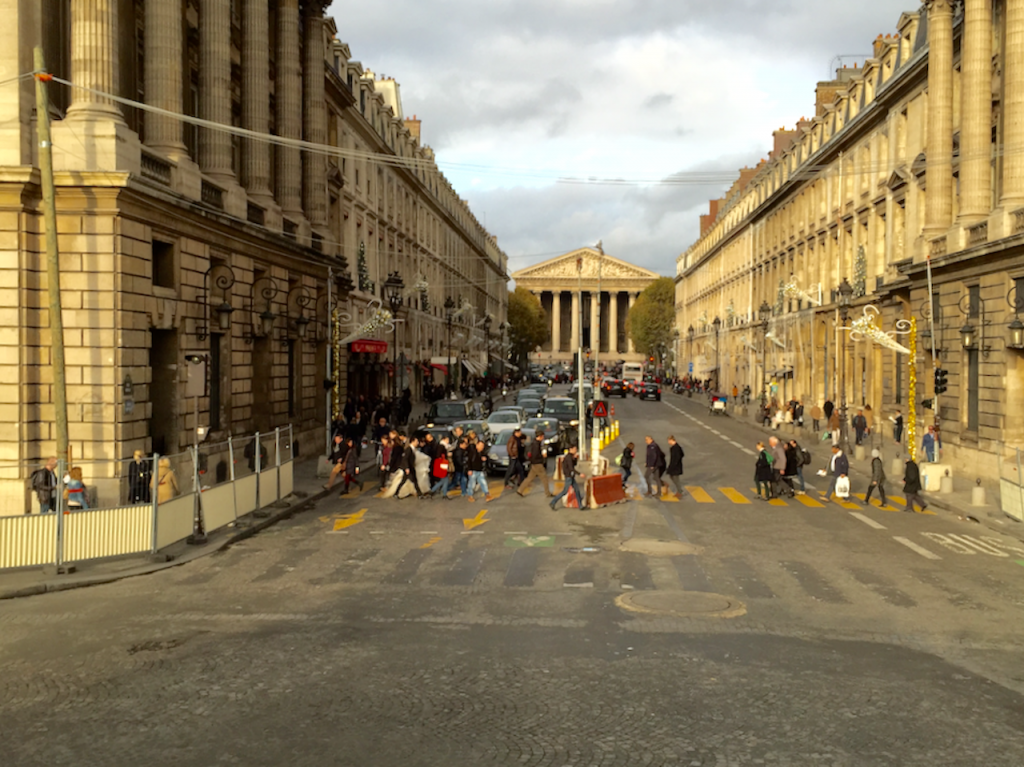
Église de la Madeleine ends the straightaway leading from the Place de la Concorde between the massive buildings flanking its north side. It is always startling to merrily trip around the obelisk, look to the side and then see a temple at the end of the street.
Nearly continuously from the 13th century, a Roman Catholic parish has been in charge of the site. And like so many of the sites for other awe-inspiring churches, various buildings have been built and torn down through the centuries. The current structure, however, is definitely unique among them.
Église de la Madeleine has an amazing organ and concerts are held regularly. Check the website when planning your trip for upcoming concert dates.
Down around back are stalls filled with beautiful flowers. And, across the street in the back you can find Fauchon – an incredible purveyor of delicacies. Then across from Église de la Madeleine in other directions, you will find Ralph Lauren, Bulgari, and other posh shops.
Architectural Style:
- It looks like a Roman or Greek temple, and in fact, its architectural style is not surprisingly, Neo-Classical. The symmetrical columns, huge pediment and expansive stairs may make you feel as though you are in an ancient land.
Interesting Fact:
- The current building is the result of Napoleon I’s desire for a Temple to the Glory of the Great Army. So, it really was built as a temple. But, as history would have it, Napoleon I was exiled before it could be used as a secular temple. The monarchy was restored (the Restoration), and that is when King Louis XVIII declared the building would be a Roman Catholic church. And, since its consecration in 1842, a Roman Catholic church it remains.
Getting There:
Address: Place de la Madeleine, 75008
Nearest Métro: Madeleine
Official website: http://www.eglise-lamadeleine.com
Admission fee: No
11. Église Saint-Eustache
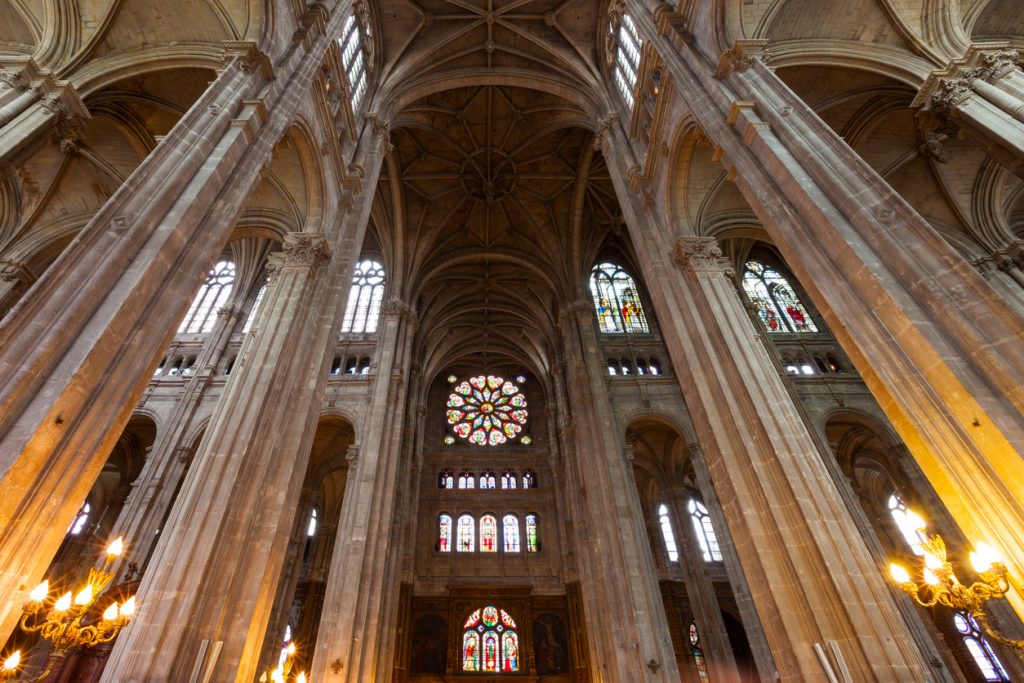
Église Saint-Eustache began as a small chapel in 1213. The first stone of the current awe-inspiring church was laid on August 19, 1532. And, on April 26, 1637, the church was consecrated. (Those Roman Catholic churches keep some meticulous records.)
The open expanse of the former Les Halles markets provides plenty of room to back way up and really see the church. The interior of the church seems vast, maybe because the ceiling is over 100′ high.
Saint-Eustache’s organ has 8,000 pipes. The church regularly holds organ concerts on Sundays at 5:30pm (except for special days). When planning your trip, check the website to confirm concert times.
Architectural Style:
- The current awe-inspiring church is generally in the late Gothic style with Renaissance features.
Interesting Facts:
- Here in 1649, Louis XIV received his first communion.
- Hector Berlioz’s “Te Deum” premiered here on April 30, 1855.
- La Fontaine, the famous fable writer, is interred in Saint-Eustache.
- During the Revolution, it was designated the Temple of Agriculture and used as a barn.
Super Cool Extra:
- Église Saint-Eustache created a video of the church filmed by a drone – really interesting to watch. See the columns, organ – everything – up close here.
Getting There:
Address: 2 impasse Saint-Eustache, 75001
Nearest Métro: Les Halles
RER: Chatelet – Les Halles
Official website: http://saint-eustache.org/
Admission fee: No
12. Église Saint-Sulpice
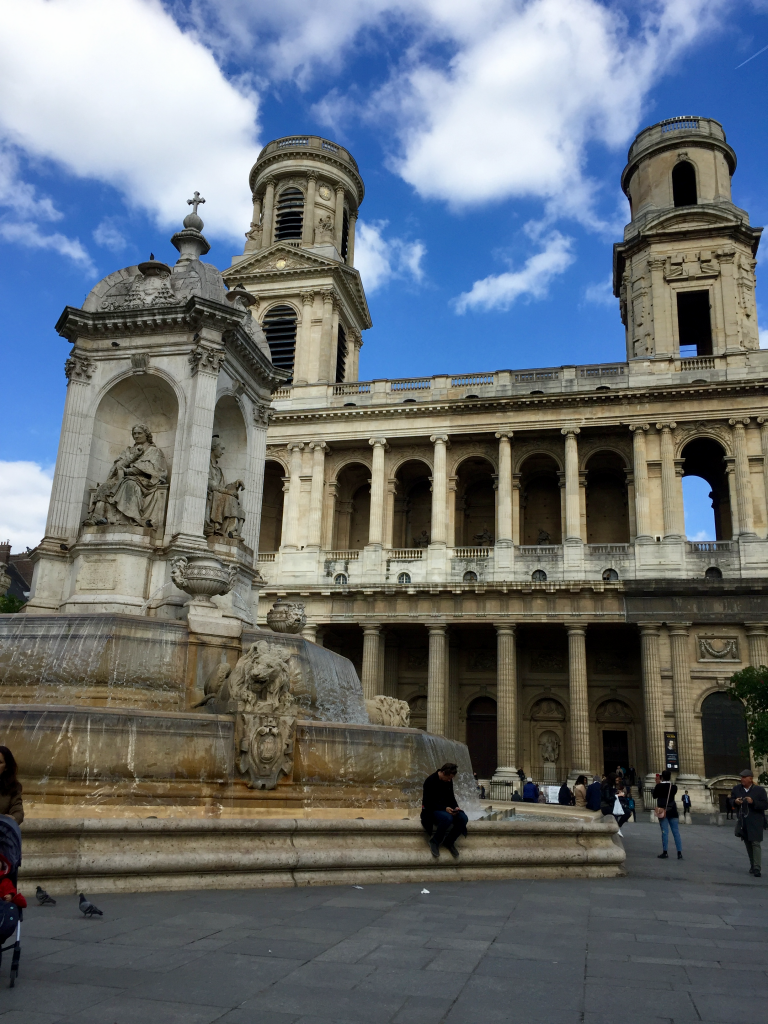
Église Saint-Sulpice is one of the awe-inspiring churches of Paris. One, because it is one of the biggest in Paris. Two, because it looks different from the others. Three, because the South tower remains incomplete due to a stop in construction during the French Revolution – and it never resumed. Four, because the grand organ, well, is pretty grand. And, five, because the square out in front is so relaxing and such a good place to admire the church and listen to the water cascading in the huge fountain in the middle.
Like nearly all of the other awe-inspiring churches, this site has a long history with the Roman Catholic faith. The current church, which was begun in 1646, is built on earlier foundations. It is also home to three murals by Eugène Delacroix. Look for them on the right, in the first side chapel.
Check for organ concerts on the website. Each Sunday the church gives mass at 11:00am and 6:45pm. For 10-15 minutes before the each of those masses, the great organ is played. (There is a choir organ as well.) Also, the great organ is played during mass and for 30 minutes after the 11:00am mass.
Across the square, just off the right corner if you are looking out of the front door of the church, is a great place for a macaroon. Stop in at the famous patisserie, Pierre Hermé, at 72 rue Bonaparte, 75006.
Architectural Style:
- Kind of a combination of Neo-Classical and Baroque with an Italianate facade.
Interesting Facts:
- Parts of the Da Vinci Code were filmed here.
- The Marquis de Sade was baptized here in 1740.
- Victor Hugo was married here in 1822.
Getting There:
Address: 2 rue Palatine, 75006, on Place Saint-Sulpice
Nearest Métro: Saint-Sulpice
Official website: http://pss75.fr/saint-sulpice-paris/
Admission fee: No
13. Église du Dôme (or Église Royale) at Les Invalides – the Boulanger’s Dozen of the Awe-Inspiring Churches in Paris
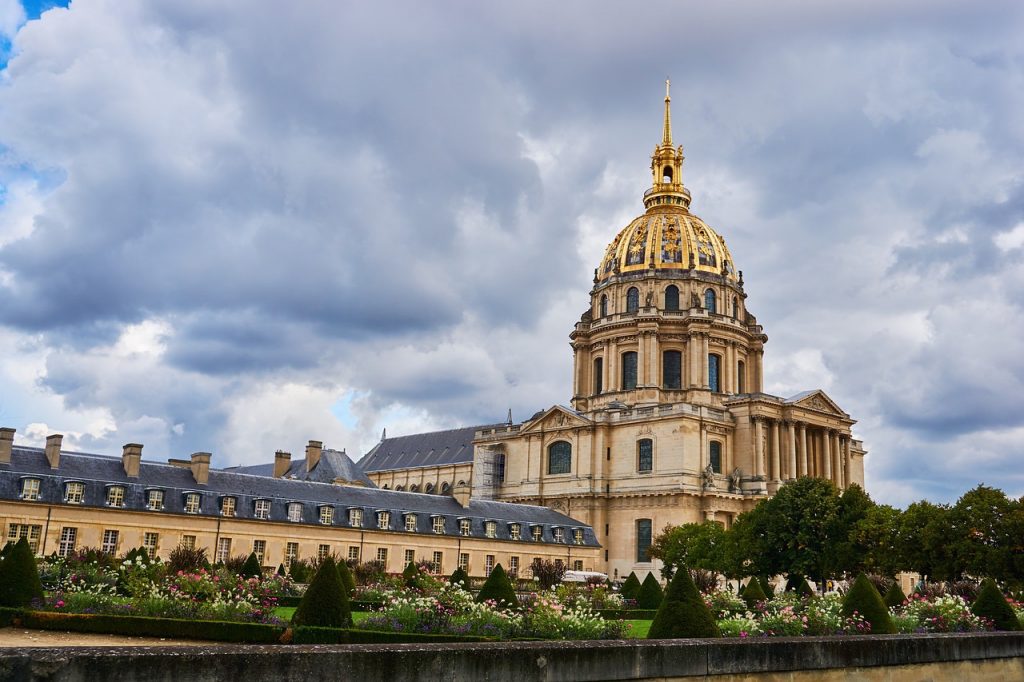
Louis XIV commissioned Jules Hardouin Mansart to design and build this royal chapel that qualifies as one of the awe-inspiring churches of Paris. The Église du Dôme was built between 1677 and 1706 and it is a stunner inside and out.
Yet, the monarchy did not survive. During the Revolution, this grand building became the Temple of Mars. Later, while Napoleon I reigned as Emperor, the building was a pantheon to military greats and many military officers are interred here.
Napoleon I was exiled and died on St. Helena. But he would again leave a permanent impression on the Temple of Mars. King Louis-Philippe decided that Napoleon I’s body should be given a place of honor beneath the great dome. After many years of extensive work, the magnificent space was ready to hold its intended imperial remains. When everything was ready, Napoleon I was given a state funeral and placed in his eternal tomb under a golden dome.
Along with Napoleon I, his son, Napoleon II (also known as l’Aiglon), the King of Rome, is interred here – without his heart or intestines. And, Napoleon’s brothers, Joseph Bonaparte and Jérôme Bonaparte can be found as well.
Beyond the royal chapel, you can see the Cathédral of Saint-Louis des Invalides, which is also known as the Veteran’s chapel. Through a glass partition between the two churches, look for flags (or trophies) taken from the vanquished that now hang from the gleaming white stone walls.
Architectural Style:
- French Baroque
Interesting Fact:
- The amount of gold on the dome is enough to make this qualify as one of the awe-inspiring churches of Paris. In 1989 it took more than 26 pounds of gold for leafing that glistening dome.
Getting There:
Address: In the Invalides complex. The facade faces avenue de Tourville, 75007
Nearest Métro: La Tour-Maubourg or Varenne (the Invalides RER and Métro stop will put you near the river and it is a long walk to get to the church.)
Official website: http://www.musee-armee.fr/en/collections/museum-spaces/dome-des-invalides-tomb-of-napoleon-i.html
Admission fee: Yes
No longer a consecrated church


